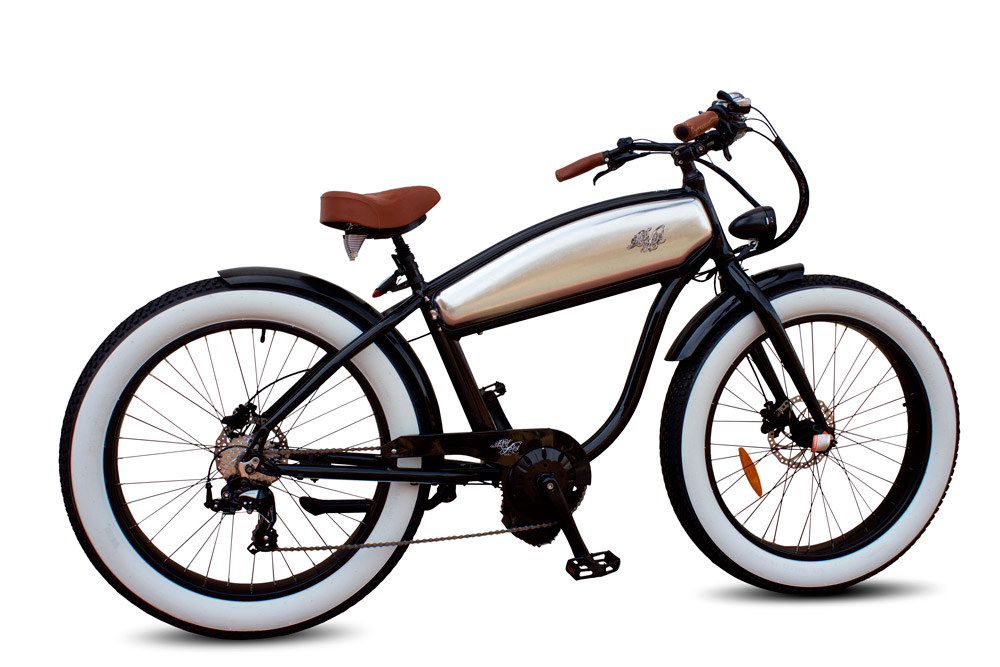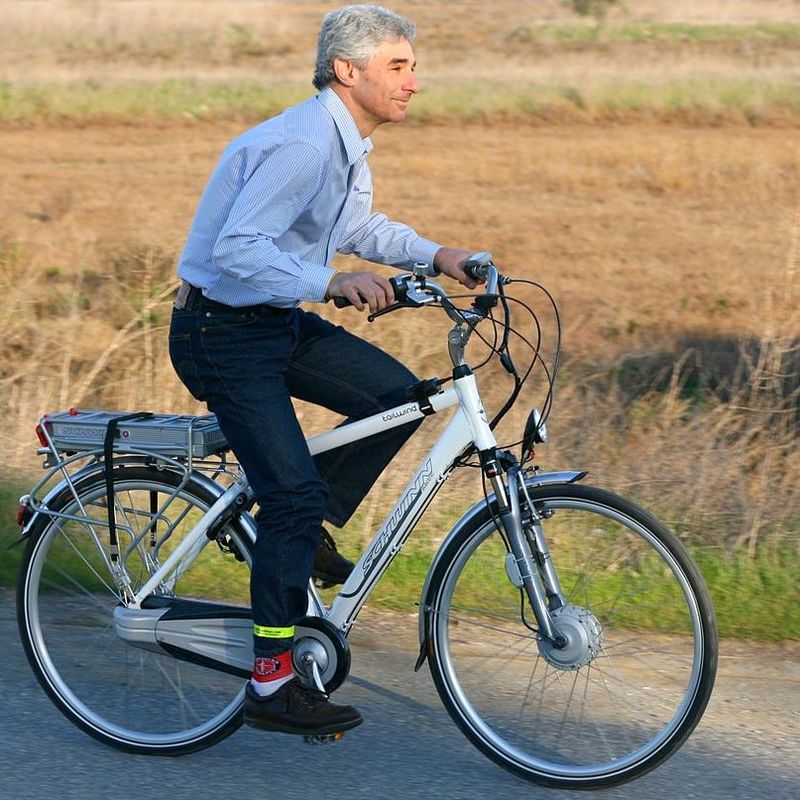
Outlaw fatbike cruiser
You’ve probably seen them around town. Maybe you’ve heard them before one passes you in the bike lane. E-bikes have been gaining in popularity as cycling becomes more and more popular. But there’s a lot people don’t know about these strange looking machines. Now with the growing trend in e-bikes, seeing a cyclist move effortlessly at high speeds is now a common sight.
Originally manufactured in China, e-bikes have made their way westward, being used by cab drivers and delivery services in New York until their ban in 2004 for safety reasons. E-bikes come in many different forms and styles, and are often mistaken for mopeds or a primitive motorcycle.
The lack of common knowledge surrounding e-bikes as well as the mismatched laws regarding their usage begs endless questions: What are they? Where are they allowed? Are they dangerous? And can I have one for Christmas?
Although motorized bicycles have been around since the late 19th century, the sleek electric versions we see today gained popularity in the late 90s. Many e-bikes seen around cities are simply modified bicycles, but technology has changed so that modern e-bikes are built as entirely new machines.

Schwinn Tailwind electric bicycle
Much like the hoverboard craze last year, many tech heads anticipate an explosion of e-bike interest in 2017. Manufactures are quick to soften that comparison by promising that e-bikes, unlike hoverboards, won’t catch fire while you ride them.
Some people aren’t completely comforted by that thought, though, and their increasing popularity means increased discussion surrounding their safety and place on the road.
E-bike marketing tends to focus a lot on the urban commuter. Pushing e-bikes as an alternative means of transportation that keep you connected with the outdoors, but moving on your way at speeds between 15-30mph. By using lithium-ion batteries that take little electricity to charge, e-bikes can boast having almost the same environmental impact as normal bikes.
Styles of e-bikes can vary widely based on need; different speeds, power, wheel size, motor location, and weight are considered depending if a person is a city commuter, mountain biker, casual rider, or if you’re hauling cargo. Despite the many brands and styles, all e-bikes work in one of two modes. Power Assist (PAS) e-bikes have a motor that automatically engages when the pedal is pressed, these are called pedelecs. Power on Demand (POD) e-bikes use a moped-like throttle to control the motor; e-bikes assist cyclists by pulling on the rear wheel, chain, or crankset.

Modified electric bicycle from regular bike
When looking for an e-bike one can shop the dozens of online stores, have a kit sent to modify a regular bike (pictured above), or visit Philly’s own electric bike shop, PHEW! (Philly Electric Wheels).
The conflict begins when looking at federal and state laws regarding the use of electronic bikes versus other forms of motorized bicycles. Many e-bikes are classified as bicycles rather than motorized bicycles like mopeds and motorcycles, meaning e-bikes have less stringent laws than most.
The U.S. has federal regulations on the safety requirements and standards of manufacturing of e-bikes, but the laws regarding their usage remain up to state decision. E-bikes have many different names across the globe, Canada chose ‘power-assisted bicycle,’ while the European Union went with ‘electric pedal-assisted cycle;’ Pennsylvania settled on ‘pedalcycle with electric assist.’
By PA laws, these pedalcycles are considered bicycles, and therefore require no license or insurance to ride them as long as someone is at least 16 years old.
Critics of the trend use the rapidly growing number of traffic deaths in China as an example of what will happen in the U.S. The biggest selling point of these bikes is their ease of mobility; one can move along with cars, but zip along the bike lanes during rush-hour traffic.
PA laws allow this, meaning e-bike riders take full advantage of both vehicle and bicycle laws. Concerned cyclists insists that with increasingly powerful motors in e-bikes come an increased danger for cyclists and pedestrians using cross walks and bike lanes.
For an inside look, check out this NYC E-wheels article about one man’s experience riding e-bikes in Philadelphia.

I can see where these could create problems. Being a motorcyclist and bicyclist the difference in speed calls for different regulation. These things are somewhere in between just enough to cause havoc. They need some regulation.